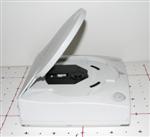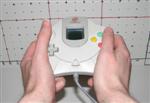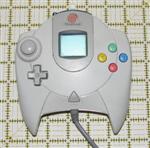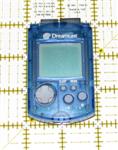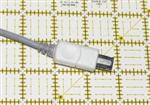Sega Dreamcast
 Sega released the Dreamcast in 1999 (On 9/9/99). It used a proprietary optical format disc, known as a GD-ROM, which was the same size as a conventional CD, yet had a higher capacity (1.2 GB, as opposed to 700 MB). The system had a large controller with a single analog stick, a D-Pad, four action buttons, one secondary button, and two shoulder buttons. It was the first console to be released in the second generation of 3D systems. Although it had initial success, having been released a year ahead of the PS2 and two years ahead of the XBox and GameCube, it was ultimately unable to compete against those later systems and was the first of them to be discontinued. Following the failure of the Dreamcast, Sega decided to pull out of the console hardware market, and instead license its games for use on other systems.
Sega released the Dreamcast in 1999 (On 9/9/99). It used a proprietary optical format disc, known as a GD-ROM, which was the same size as a conventional CD, yet had a higher capacity (1.2 GB, as opposed to 700 MB). The system had a large controller with a single analog stick, a D-Pad, four action buttons, one secondary button, and two shoulder buttons. It was the first console to be released in the second generation of 3D systems. Although it had initial success, having been released a year ahead of the PS2 and two years ahead of the XBox and GameCube, it was ultimately unable to compete against those later systems and was the first of them to be discontinued. Following the failure of the Dreamcast, Sega decided to pull out of the console hardware market, and instead license its games for use on other systems.







